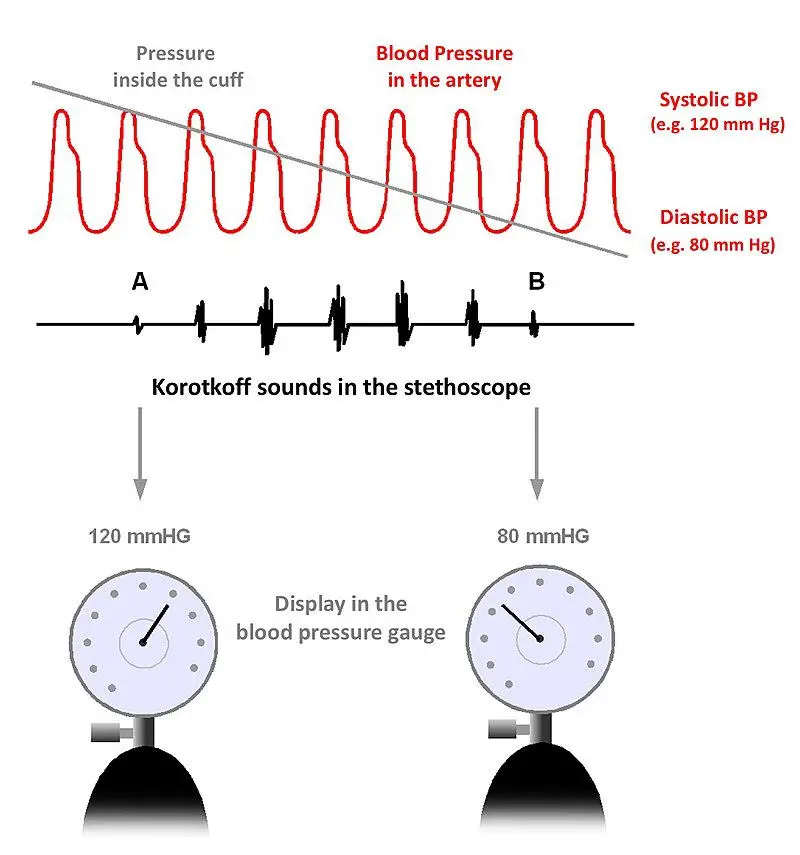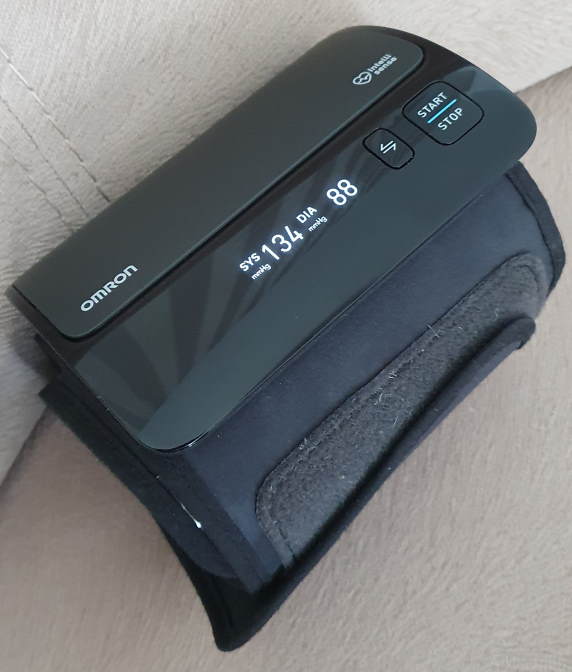Blood pressure readings are represented in mmHg – millimetres of mercury – due to mercury manometers (devices used to measure pressure) being historically used to measure it. Mercury is a much heavier liquid than water and as most manometers work on the basis of measuring how far along a tube, usually a u-bend, liquid is pushed by pressure, using mercury allows for a much shorter tube to be used than if you used water or just air instead.
While mercury manometers are still highly regarded for their accuracy in taking blood pressure readings today, most fully automated blood pressure cuffs for home use, contain no mercury. However they still represent their readouts in units of mmHg due to this historical connection.
Blood Pressure Readings, A Grisly Start?
Taking blood pressure readings or measurements goes back to 1733, when an English clergyman named Stephen Hales (1677-1761) inserted a brass tube into a horse’s artery. This was attached to a glass tube 9ft in length and positioned vertically. Upon untying a ligature on the artery, the blood rose in the tube to a height if 8ft 3inches above the left ventricle of the horse’s heart and this became the first recorded demonstration of measuring blood pressure.

Mercury Use In Blood Pressure Readings
Jean Louis Marie Poiseuille (1799-1869) later replaced the inconveniently long tube that Hales has used, with a shorter length manometer (a general device for measuring pressure) that contained mercury, a dense liquid metal that requires much more pressure to push it up a tube or around a u-bend, compared to the open air in Hale’s tube. For example the pressure represented by a column of 100mm of water is about equivalent to 7.4mm of mercury. Poiseuille used a lead tube instead of a Hales’ brass one and inserted it into the artery, he filled that with potassium carbonate to stop the blood clotting. Poiseuille’s haemodynamometer also showed that blood pressure changed upon expiration and inspiration (breathing in and out).
Non-Invasive Blood Pressure Readings – The Sphygmomanometer
Karl von Vierordt (1818-1884) invented the sphygmograph and he determined that blood pressure could be measured by the amount of counter-pressure that was needed to remove detectable pulsation. Etienne-Jules Marey’s (1830-1904) more practical version followed which could trace the human pulse. However, it was Samuel von Basch (1837-1905) who first presented a device that did not need to puncture the artery for measurement, the sphygmomanometer. This was balloon placed over the artery in the wrist and pressured until the pulse could no longer be felt. This gave a reasonably accurate determination of systolic blood pressure (the pressure when the heart contracts on a beat) and he went on to make the connection that higher systolic blood pressure values led to increased risk of strokes and kidney disease.
The Riva-Rocci Upper Arm Cuff and Harvey Cushing
Scipione Riva-Rocci, an Italian physician invented the arm cuff in 1896 that we are familiar with today, which is placed around the upper arm in order to restrict the brachial artery. Measurement was done with a wall mounted mercury tube. Until Harvey Cushing (1869-1939), the American neurosurgeon, visited Pavia in 1901, Riva-Rocci’s sphygmomanometer arm cuff was not well known about. Harvey Cushing asked to take one back with him to Baltimore and once he had successfully used it for his various surgeries was asked to demonstrate its value at a specifically convened meeting in Boston. His research paper, “On routine determinations of arterial tension in operating room and clinic” (Boston Medical and Surgical Journal) Boston, 1903, was published and the mercury sphygmomanometer thereafter became the standard blood pressure measuring kit.

Korotkov Sounds and Diastole Measurement
The Russian, Nikolai Sergeyevich Korotkov (sometimes Korotkoff) went on the improve the sphygmomanometer replacing the mercury manometer with a pressure dial (aneroid gauge) and discovered what are now known as the Korotokov sounds in 1905. This is a technique of listening to the brachial artery below the Riva-Rocci cuff with a stethoscope. It is also known as the auscultatory (listening) method.
Without the cuff no sound should be heard in a healthy person, as blood is pumped smoothly (laminar flow) down the arm. With the cuff on and pressurised above that of the patient’s systolic pressure, no sound should be audible either as the inflated cuff blocks the blood flow from passing under it. As the pressure in the cuff eases to be the same as produced by the beating heart (systolic pressure), some blood will pass through the upper arm at the systole pressure, and pass to the lower arm causing turbulence of flow. This produces the first thumping sounds heard with the stethoscope and these noises will continue every time the blood pumps at a pressure above the pressure of the cuff and on down the arm. Eventually as the pressure eases in the cuff further, the noises will change, then disappear as non-turbulent flow is regained. The pressure in the cuff is no longer high enough to fend off even the resting diastolic pressure in the arm. There are actually five different phases of Korotkov sounds that can be heard during this process.

When the first noises are heard the medical professional notes the pressure on the gauge as being the systolic pressure and when they become barely audible or halt altogether they note that pressure as the diastolic pressure. This is demonstrated in the diagram illustration above.
Home Blood Pressure Monitors
Fully automated techniques for blood pressure measurements first came about in the 1980s, with cuffs that inflate themselves and use pressure sensors (transducers) to detect waveform changes in the cuff based on the oscillometric method. They use a variety of algorithms and electronics to detect and interpret how the pressure in cuff varies or oscillates to produce the result.

Above is an example of a fully automated Omron Evolv Smart Home Blood Pressure Monitor cuff, recently removed from the arm of the tester. It auto-inflates using batteries and measures systolic and diastolic pressures alongside pulse. You can see the readings “SYS 134 mmHg” and “DIA 88 mmHg”. This reading would generally be considered to be in the prehypertension range or if using the American College of Cardiology & American Heart Association hypertension scale, actually in the hypertension stage 1 range. See this reading analysed and find analysis of your own blood pressure readings for free at xBloodPressure.com.
More recently advances in technology mean less obtrusive wrist bp monitors such as the one from Aktiia can be worn throughout the day and night providing excellent monitoring of upto 800 readings per month.
Other Popular Articles: